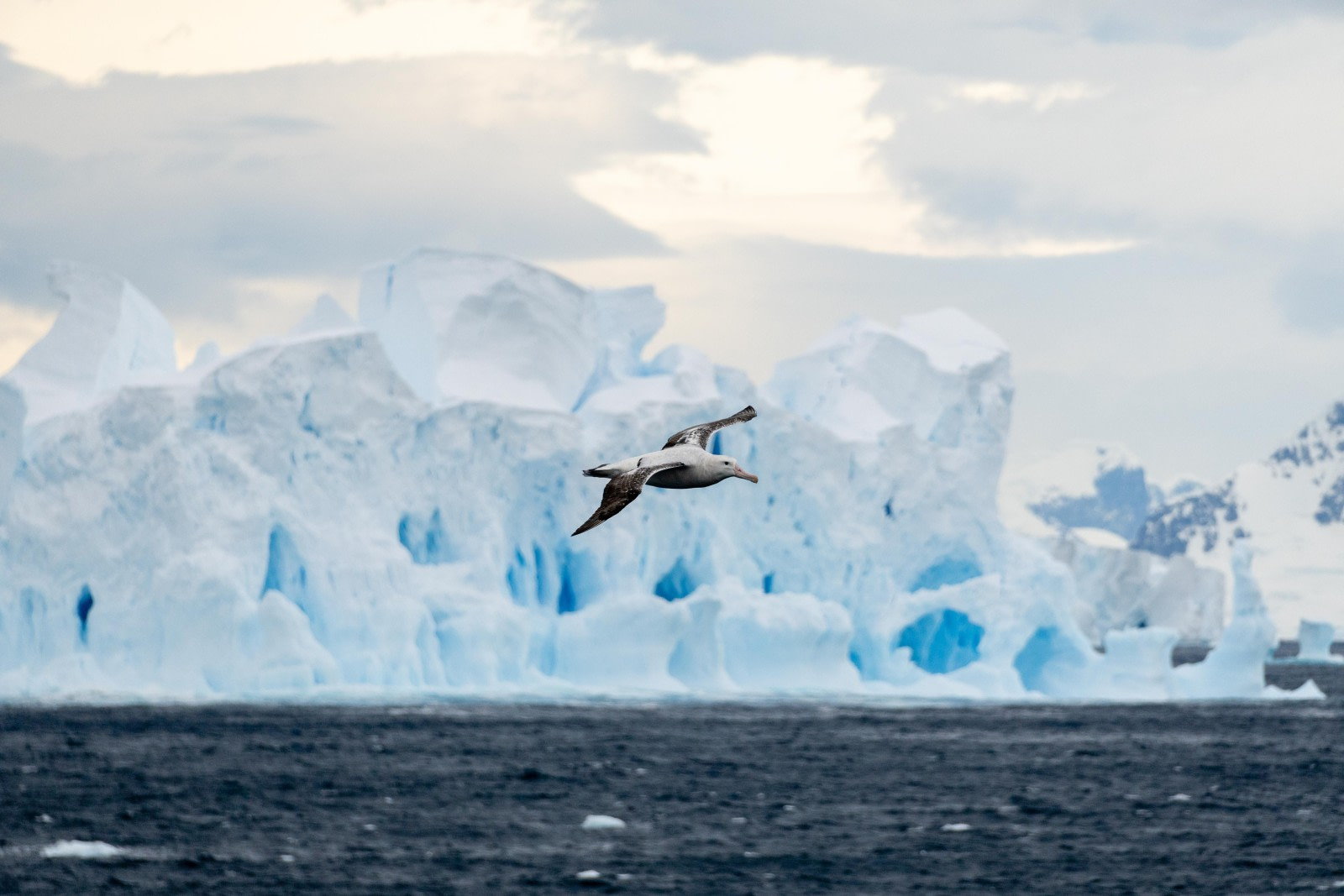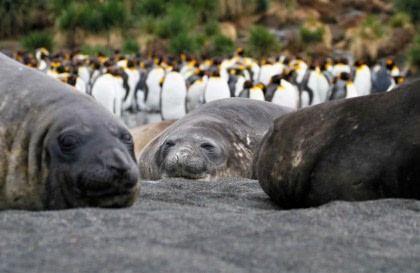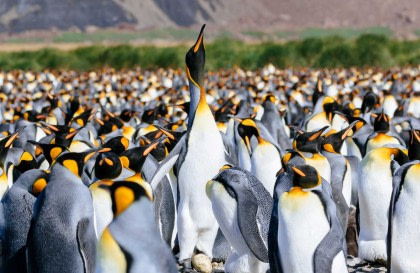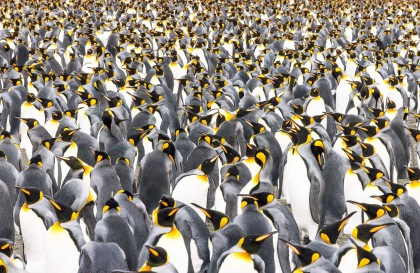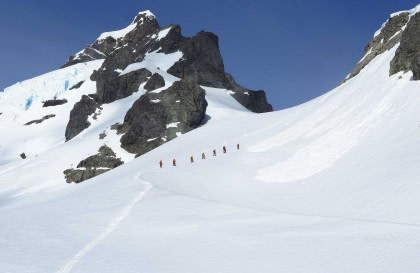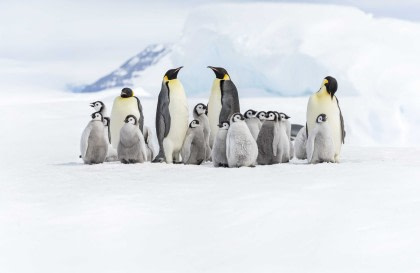Visiting Antarctica in January can be an extraordinary experience. As the heart of the Antarctic summer, January is one of the best times to explore the icy wilderness of the frozen continent. With long daylight hours, abundant wildlife, and spectacular landscapes, visiting in January allows you to witness Antarctica's raw beauty and majesty in full bloom.
During January in Antarctica, the ice is at its most stable, wildlife is active, and temperatures are relatively mild compared to the harsh extremes of winter, making it an optimal period for joining an expedition cruise to the edges of the world.
The Antarctica expedition cruise experience in January
For good reason, January is one of the peak months for Antarctic expeditions!
During the Antarctic summer, the ice that covers much of the continent is at its thinnest, making travel by ship and Zodiac boats more accessible. You can explore the region more deeply on a small expedition cruise vessel, such as those in our fleet, with the ice-strengthened hulls of m/v Hondius, m/v Ortelius, and m/v Plancius being capable of entering solid one-year sea ice as well as loose multi-year pack ice.
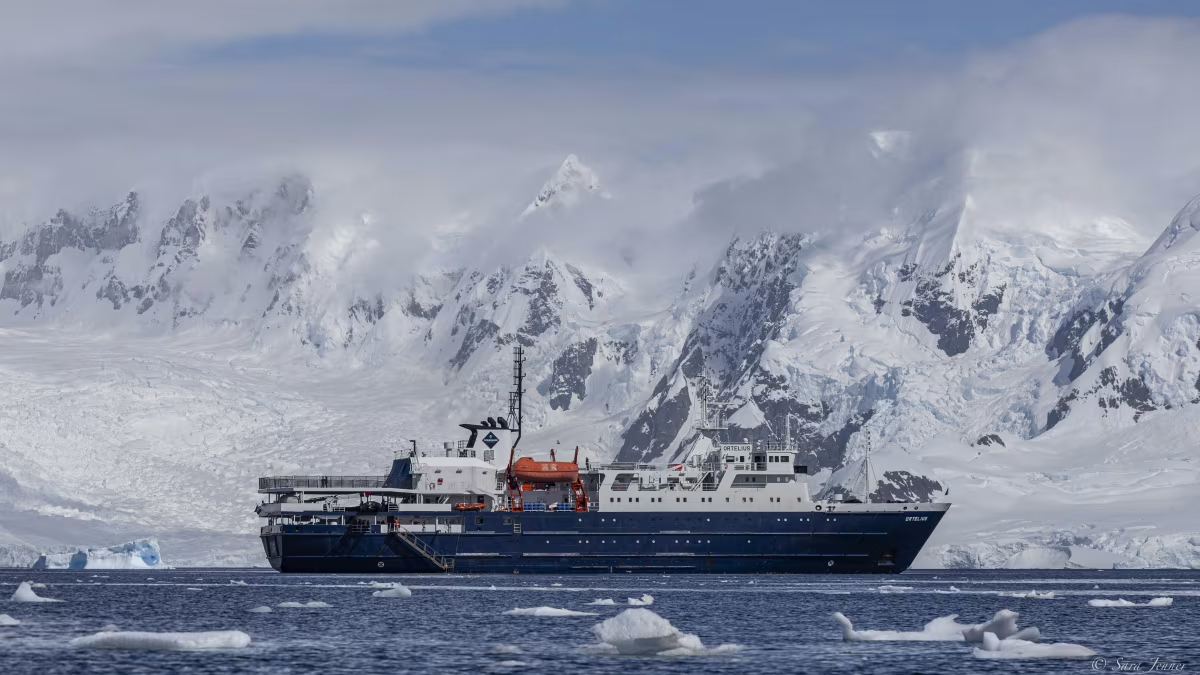
Picture by Sara Jenner
On an expedition cruise to Antarctica in January, you'll find yourself surrounded by towering icebergs, vast glaciers, and jagged mountain peaks, often with little more than the sounds of fracturing ice or the calls of penguins and barks of seals breaking the stillness. Wildlife sightings are one of the major highlights of a visit to Antarctica in January. You'll witness penguin chicks growing into their fluffiest, cutest form, seal pups on the ice, and an increasing number of whales breaching in the frigid waters.
On an Oceanwide Expedition cruise to Antarctica in January, you may also get the opportunity to land at some of Antarctica's most famous research stations, like those on the Antarctic Peninsula, where you may have the chance to interact with scientists conducting research and essential conservation work. Zodiac landings allow for a closer exploration of penguin rookeries, iceberg-filled bays, and stunning coastal landscapes, with additional landing sites opening up throughout the season as the ice retreats.
During January, expedition cruises can begin to venture beyond the polar circle, taking you deeper into the icy heart of this beautiful, untouched part of our planet.
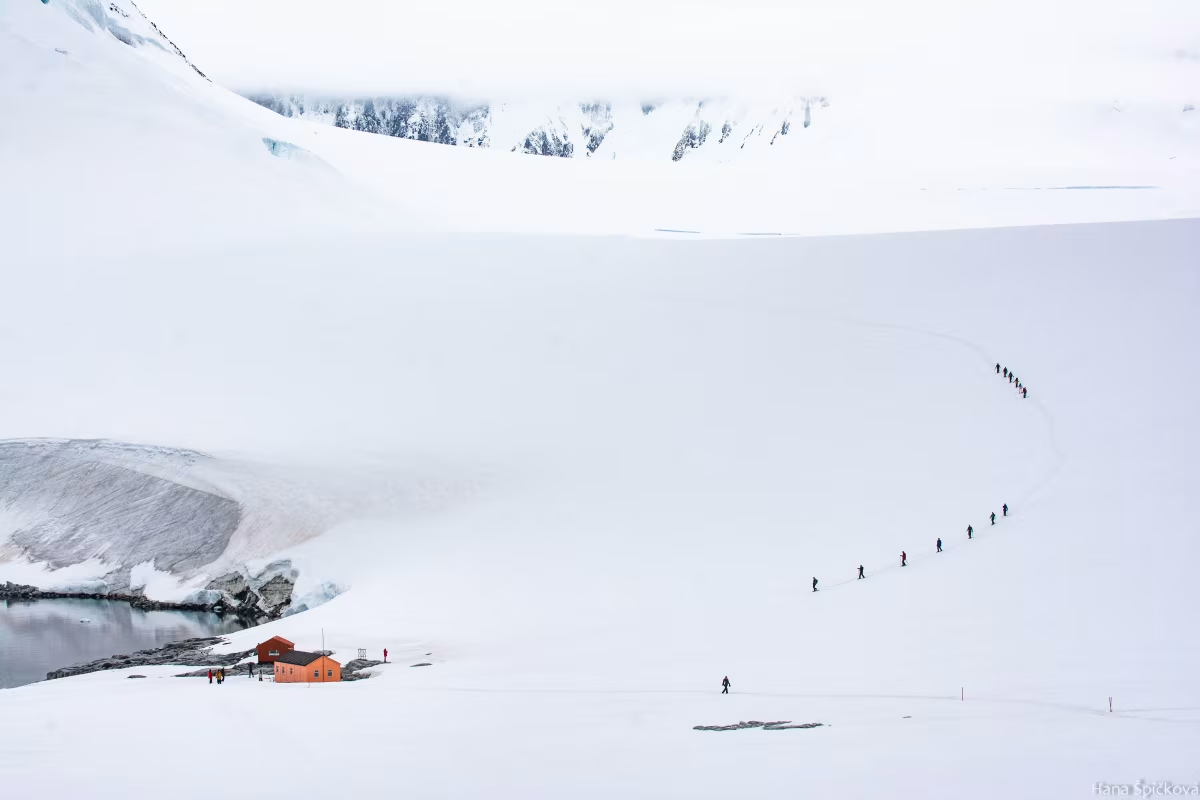
Picture by Hana Spickova
What to expect in January on an Antarctica expedition cruise
January is an exciting time to visit Antarctica. The continent is bathed in 20+ hours of daylight, giving you more time to explore and photograph the polar world around you. Photographic conditions are superb throughout January, with the bright light making wildlife photography particularly optimal. The brief dawn and dusk also offer differing light conditions, which are great for landscape photography.
January is perhaps the peak month for wildlife activity in Antarctica. This is when many penguin species, including the gentoo and Adélie penguins, breed and raise their chicks, making it a magical time for animal lovers and photographers. You'll see many penguin chicks at their fluffy best during this period. Seals, particularly the Weddell and crabeater seals, are often found lounging on the ice floes, fattening up their young, while on islands such as South Georgia, elephant seals will be at their boisterous best.
In the water, humpback whales begin to arrive in more significant numbers in Antarctica throughout January. The krill-rich waters are an important feeding ground for humpbacks and other whale species, including minke whales, which also make appearances as the season progresses.
January's relatively mild temperatures make it a perfect time to take part in the many activities offered during an Oceanwide Expeditions trip to Antarctica. The dispersed sea ice makes kayaking possible at additional locations while snowshoeing, mountaineering, and hiking can be enjoyed in warmer conditions. You'll also have the chance to camp on the ice by joining a Basecamp Antarctica trip to the Antarctic Peninsula. While a polar plunge is always a refreshing experience, during January, you may find the frigid water less intimidating. Regardless of whether you choose to take the plunge, you'll have plenty of time to take in the stunning natural beauty of the Antarctic world, from towering glaciers to vast, unbroken horizons.
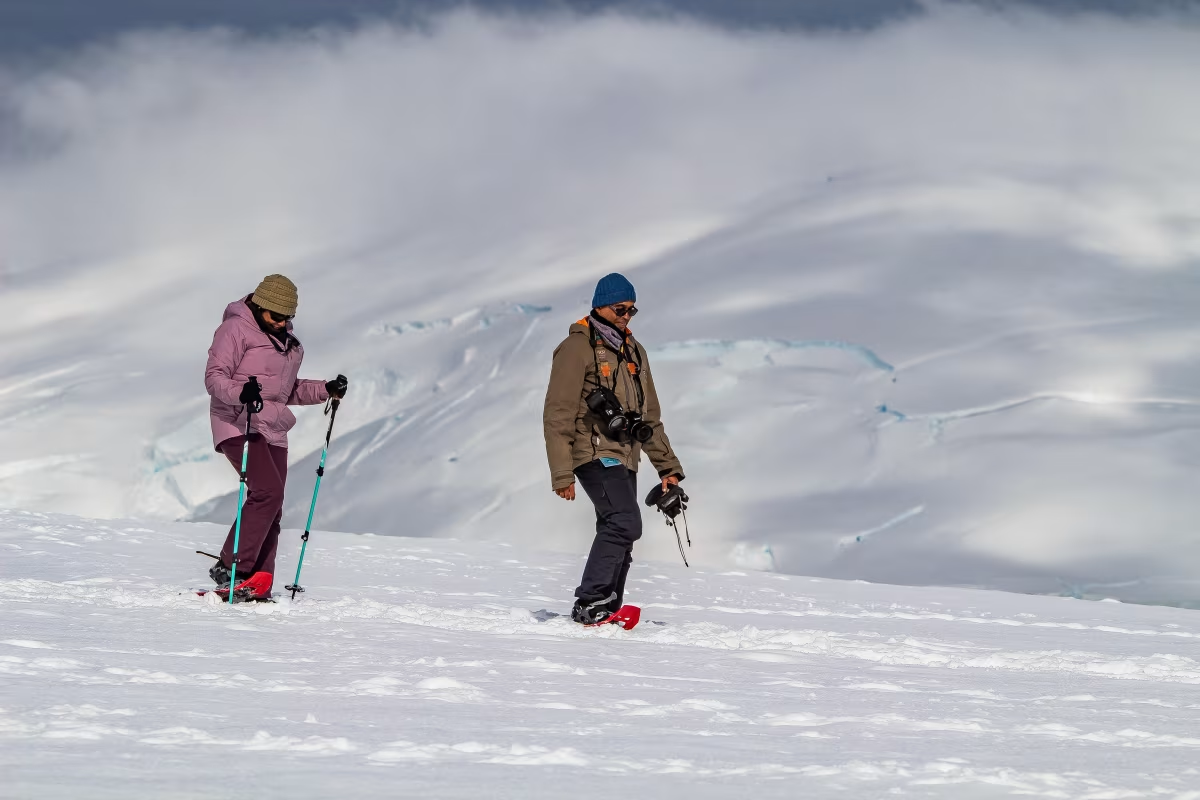
Picture by Koen Jongerling
Antarctic weather in January
The weather in Antarctica during January is relatively mild compared to other months of the year, but it still requires careful preparation! After all, you're at the icy edges of the world. The temperature in Antarctica during January typically ranges from -5°C (23°F) to 8°C (46°F), with the warmest temperatures along the Antarctic Peninsula. You may find the temperatures higher than you expected. However, things can quickly turn. Whether on the Antarctic Peninsula, South Georgia, the Falkland Islands, or anywhere in between, it is essential not to underestimate the changeable polar weather.
Though not excessively cold, the wind chill factor can make it feel colder, particularly in more exposed areas. January also has more stable weather, with fewer storms than in the winter months, allowing for a smoother and more predictable expedition cruise experience. Like any other month in Antarctica, it is essential to be prepared for various conditions, ranging from sun and wind to rain, mist, and snow.
What to pack for an expedition cruise to Antarctica in January
Packing for an expedition cruise to Antarctica in January requires careful planning to ensure comfort and safety during your journey. While temperatures are milder compared to the winter months, the weather can still be harsh and unpredictable. Layers are essential to any comfortable trip to Antarctica. When the weather is warmer, you can remove layers easily before re-layering when conditions turn. A warm base layer, such as thermal underwear and insulated mid layers, is essential.
You should also wear waterproof outer layers, including a strong jacket and trousers, especially when participating in activities on land or in a kayak or Zodiac. Windproof clothing can help you stay warm and dry in even the most frigid of January conditions and can mitigate wind chill. Be sure to pack gloves and a hat to keep your extremities warm, and insulated socks are useful both while hiking and for staying warm when on deck. Good boots and waterproof gloves are also essential.
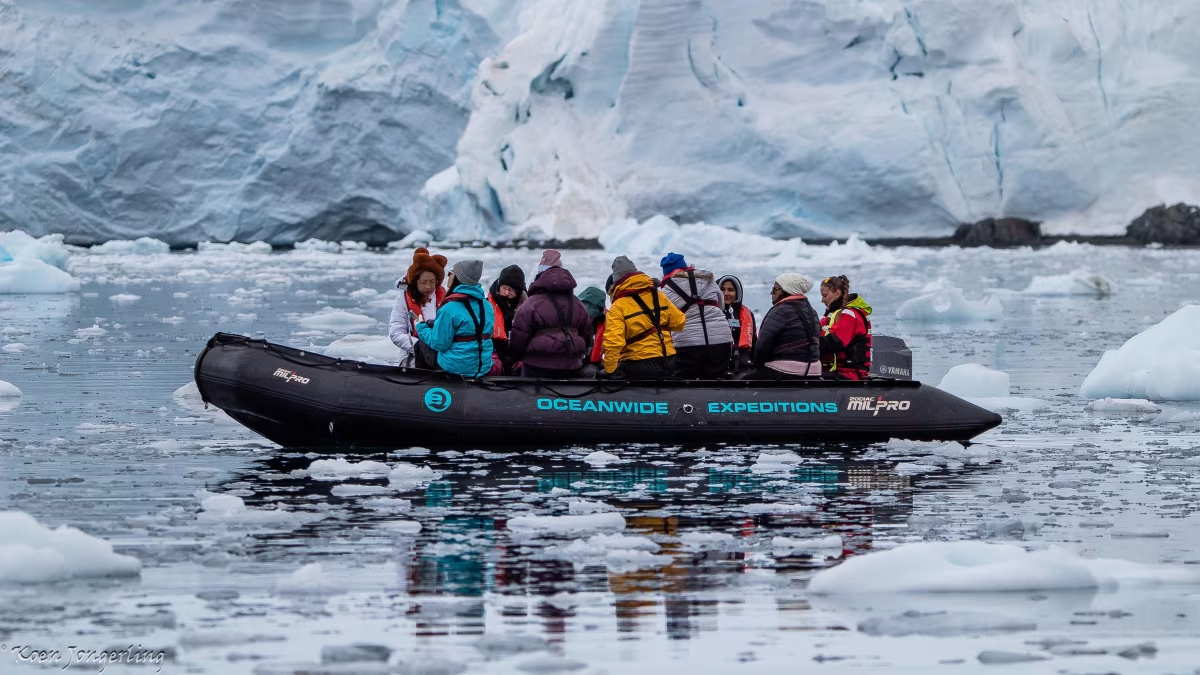
Picture by Koen Jongerling
Don't underestimate the power of the sun in the polar regions. Be sure to bring sunscreen and lip balm, as the dry environment can quickly dry lips. Sunglasses can prevent snow blindness, especially in bright conditions, so these should be considered essential.
Lastly, remember to pack your camera and a pair of binoculars! Wildlife encounters can occur at any distance, and on an expedition cruise, the goal is to avoid disturbing wildlife. So, viewing from a distance may sometimes be the best course of action.
Book your expedition cruise to Antarctica in January
January is a popular time to visit Antarctica, so booking early is a great way to secure your spot. Oceanwide Expeditions offers a range of itineraries that provide a truly immersive experience in this untouched wilderness. You can join a Basecamp Antarctica trip to experience the best activity program or take a voyage into the Weddell Sea or across the expansive Southern Ocean.
To start planning your Antarctic expedition, contact our team, who will guide you through the booking process, help with trip planning, and ensure your journey to the southernmost continent is unforgettable. You can also browse our latest offers and updated trip itineraries online.
There's no better time to embark on the adventure of a lifetime.
Main image by Annina Scholl
